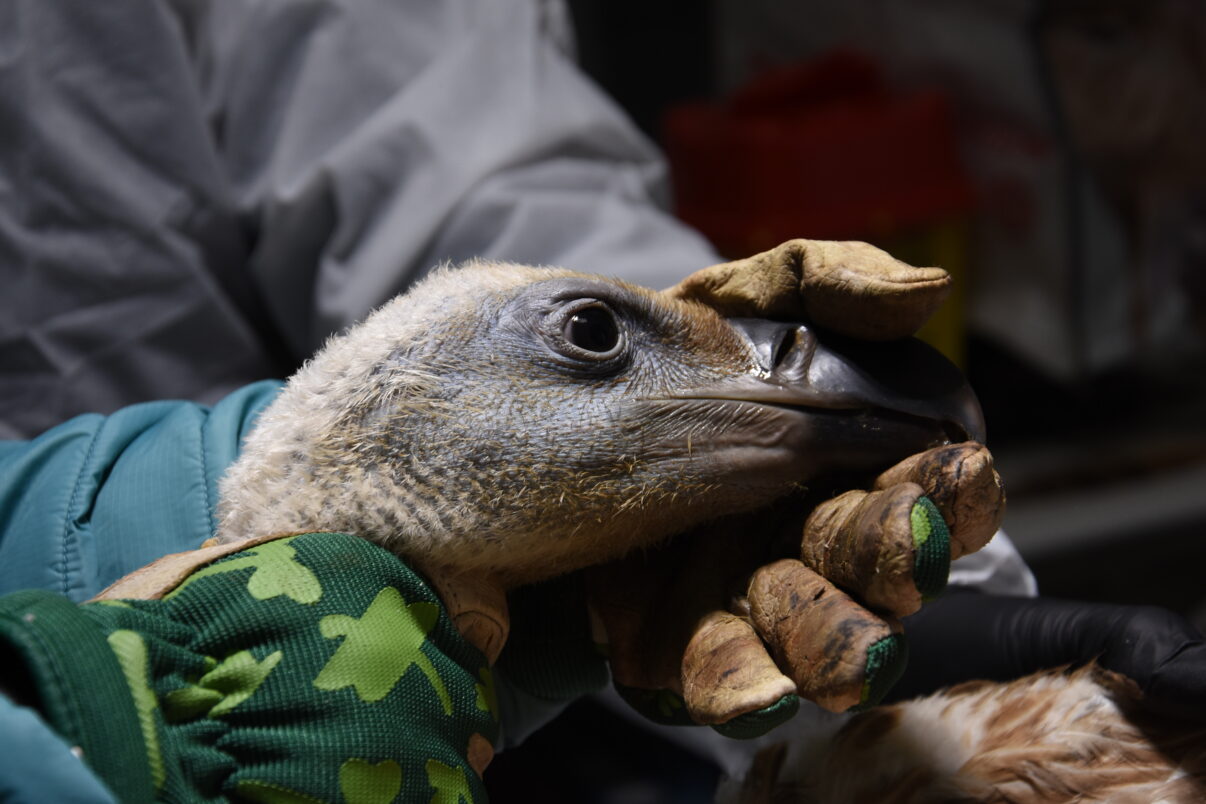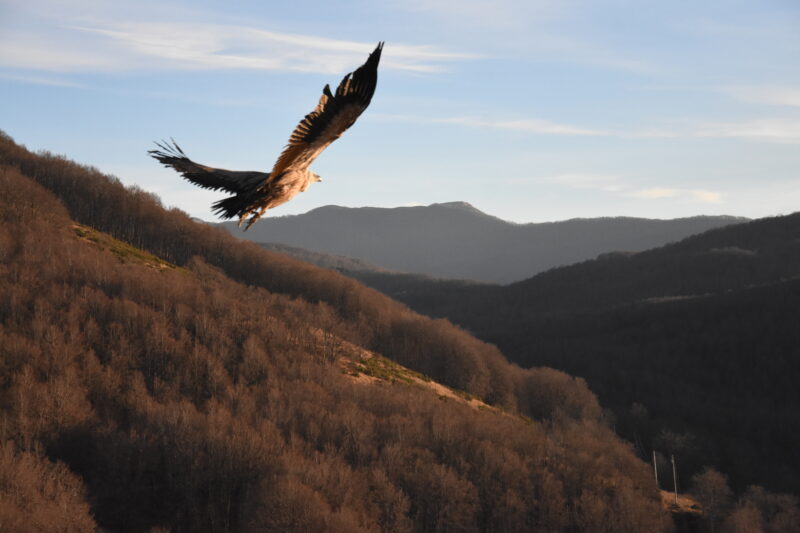The team effort of Rewilding Apennines, Carabinieri Biodiversity Unit of Castel di Sangro, and CRFS Lipu in Rome, facilitated the recovery and rehabilitation of the young griffon vulture monitored via GPS.

On the afternoon of Sunday, November 26, 2023, seemed to flow like many others, at least until the GPS of a young griffon vulture, monitored, within the collaboration protocol between Rewilding Apennines and the Carabinieri Biodiversity Unit of Castel di Sangro, signalled an anomaly: the animal had been stationary for too long.
While it’s not uncommon for griffon vultures to stay in the same place for several hours, especially in the presence of food, an individual remaining motionless in one spot for days is undoubtedly suspicions. Feeding exclusively on carcasses, griffon vultures are often victims of poisoning and intoxication. Poisoned carcasses intended to target large predators have claimed griffon vultures lives in the past spring and subsequent months. Sometimes, these scavengers feed on the remains of wild animals hunted or poached with lead-containing ammunition, and lead, when accumulated in the tissues, can poison the vultures and, in severe cases, bring to their death.
Our field officers, noticing the anomaly, immediately went to the location for an inspection. However, initially, due to darkness, locating the animal was impossible. They tried again next morning and with the collaboration of the Carabinieri Biodiversity Unit, the young griffon vulture, cold and weakened, was located and captured.

The officers transported it to the CRFS (Wildlife Recovery Center) Lipu in Rome, where it received all necessary assessments. Despite blood levels of lead slightly higher than the toxic threshold, the young griffon was in good physical condition. The tests, performed several days after it should have last fed and therefore intoxicated, suggest that it had probably fed on slaughter waste of animals hunted with lead-containing ammunition, hindering its ability to fly.
Fortunately, the young griffon vulture proved to be a fighter right from the start and resumed feeding shortly after arriving at the CRFS Lipu. Despite promising conditions, it took the animal over a month to return healthy enough to be released back into the wild.

On January the 2nd, the teams from CRFS Lipu and Rewilding Apennines released the griffon near one of the reproductive colonies in Abruzzo to enhance its chances of survival.
“In this case, as in several others since the start of the monitoring program in 2021, the use of satellite transmitters allowed us to intervene promptly to recover an animal that would likely have died otherwise,” stated Nicolò Borgianni, Vulture Field Officer at Rewilding Apennines. Satellite transmitters not only identify potential poisoning cases, as occurred multiple times in 2023 but also detect abnormal movements indicative of distress due to diseases, injuries, or intoxication (as in this case). “The first winter is undoubtedly a challenging time for young griffon vultures, facing cold temperatures, difficult flying conditions, and increased food scarcity for the first time in their lives. They are more inclined to feed on slaughter waste or leftovers from farming operations, exposing them more frequently to potential health risks. GPS monitoring is crucial for rescuing sick or injured individuals, especially considering the high anthropogenic mortality rate for the population of griffon vultures in the Central Apennines. Each individual is vital for the survival of the species in our mountains.”

This young specimen was undoubtedly very fortunate. Its story demonstrates how collaboration between local entities and organizations can be crucial for the preservation of wildlife. Furthermore, it underscores the effectiveness of the monitoring program, enabling tracking locations of interest for the species, such as feeding and nesting areas, together with the timely intervention necessary to save the lives of these precious yet underestimated animals.
We express our deep gratitude to all who contributed to the recovery and release of the young vulture: our field officers, active even on weekends, the Carabinieri Biodiversity Unit of Castel di Sangro, and the personnel of CRFS Lipu in Rome. We hope that this specimen continues to soar in the skies of the Central Apennines for a long time, contributing to the conservation of its invaluable species. Stories like this one repay us for all the efforts made so far and motivate us to continue working with increasing dedication to ensure a safe environment for the griffons of the Central Apennines to thrive and fulfil their fundamental role in the ecosystem.
